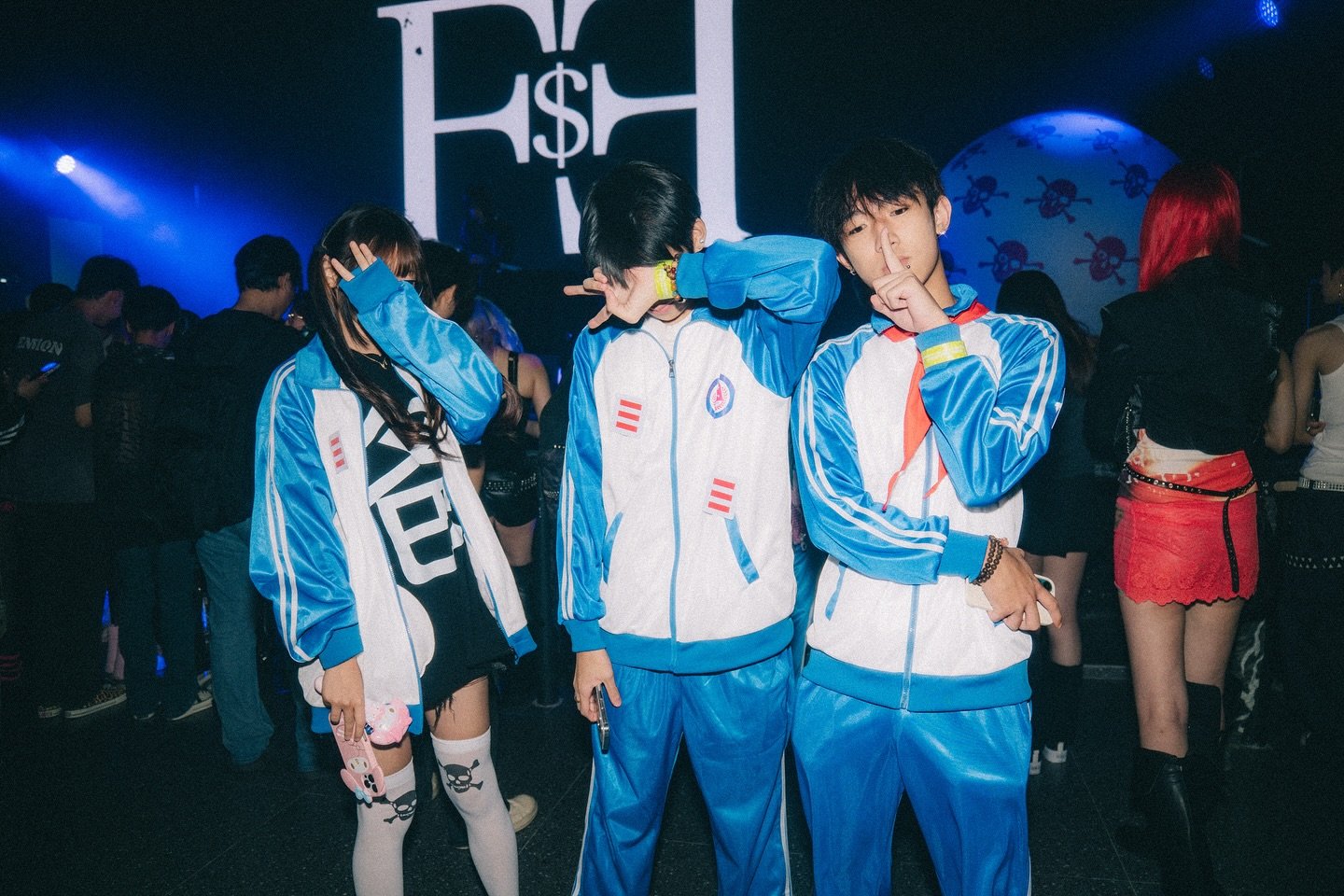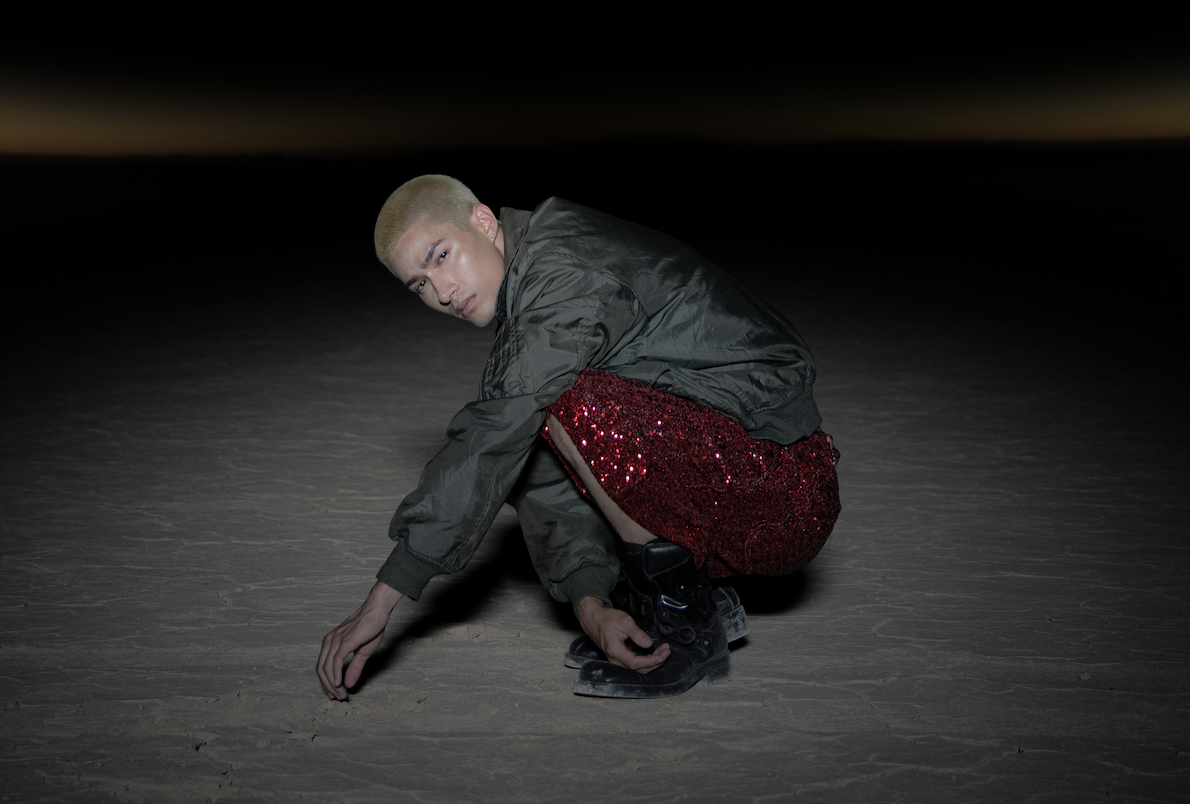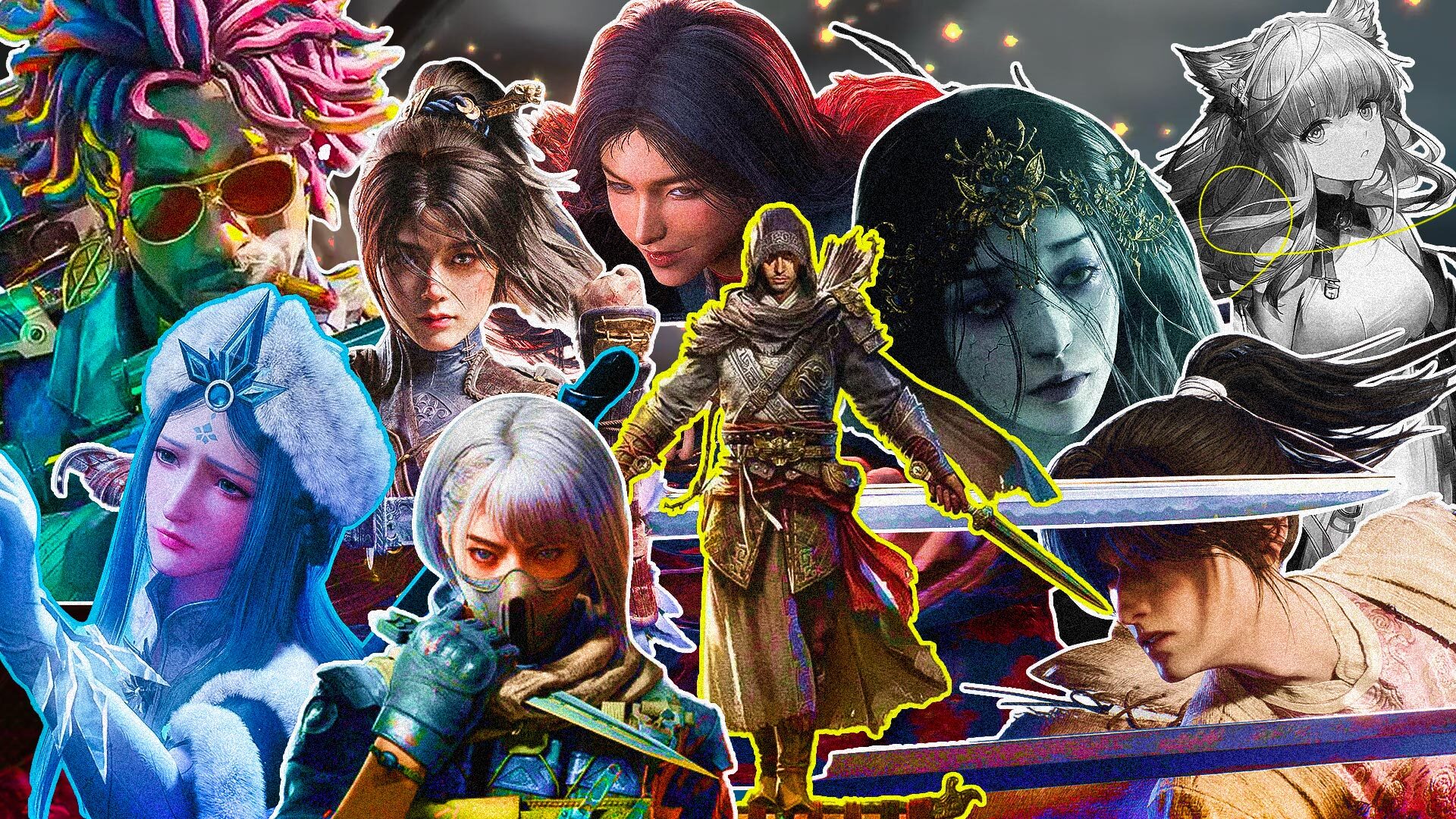There’s a rich history of Chinese ghosts — as many as 1,520 spirits have been compiled.
To celebrate the global love of ghosties and ghoulies, here is a collection of 33 creatures, spirits and demons from across Chinese folklore.
Deadly Demons
旱魃 Han Ba
A Chinese monster of folklore that causes drought, believed to come from hundred-day-old corpses that don’t decompose, and rise from the earth as Jiangshi (literally “stiff corpse,” or Chinese zombies). Digging up, beating and burning Jiangshi were popular folk customs during the Ming (1368-1644) and Qing (1644-1911) eras, usually from moist graves in drought areas. This custom continued in areas of Shandong up til the 1960s and features in the Shi Jing, China’s first anthology of poetry compiled by Confucius in the 6th to 5th centuries BCE. In Han mythology, Han Ba is believed to be Pa, the drought fury, the daughter that Huang Di summoned to help him defeat his archenemy Chi You. Pa refused to return to her caves in the mountains and instead wanders the earth.
独角鬼王 Du Jiao Gui Wang
His name literally means “Singled Horned Demon King.” A very powerful demon whose demonic essence is concentrated in his horn, which is said to be so powerful that no one really knows what it’s capable of. The Chinese literary classic Journey to the West features Du Jiao Gui Wang as a friend to Sun Wukong, the Monkey King. In his early years, the young monkey spirit, whose mere existence challenges the boundaries between the worlds of gods and demons, befriended many demons. Later, in his role as protector of Xuanzang at the behest of the gods, some of his demon friends still came to his aid, when he needed assistance on their long and hazardous pilgrimage.
Related:
 The Many Faces of the Monkey King: How the Legend of Sun Wukong Lives on in Popular CultureBehind the magic is a monkey whose stories of adventure and transformation resonate with audiences of all culturesArticle Jan 27, 2020
The Many Faces of the Monkey King: How the Legend of Sun Wukong Lives on in Popular CultureBehind the magic is a monkey whose stories of adventure and transformation resonate with audiences of all culturesArticle Jan 27, 2020
刀劳鬼 Dao Lao Gui
This Chinese demon lives in the mountains, likes to roar in the wind and rain, and shoots poisonous darts. Venom from the male demon kills instantly, while that from the female induces swelling and lengthens the agony of death. The dart of Dao Lao Gui means certain death within a day, unless treated promptly. The demon was documented in Soushen Ji, and still frequents many contemporary video games.
猙獰 Zheng Ning
An ancient horned beast with five tails and the body of a leopard. Very ferocious. The male is called Zheng and the female Ning. The ferocity of the Zheng Ning became so well known that it lent its name to the adjective zheng ning, meaning “malevolent, fierce, sinister.” Modern interpretations of the Chinese monster have really picked up on these aspects.
山魈 Shan Xiao
A monster that lives in the mountains. With large teeth and covered in fur, it is super strong and can tear lions and tigers apart with its bare hands. It has a habit of visiting abandoned homes and country dwellings, and is famously depicted on such an occasion in an encounter with a terrified scholar in Pu Songling’s Strange Stories from a Chinese Studio. Shan Xiao come in many guises, sometimes in their true form, other times as irresistible sirens. They like to hurl stones at travelers, lead them astray, and occasionally eat them.
Related:
 China’s Ghostwriter: The True Story Behind Jackie Chan’s New Movie “Knight of Shadows”In an upcoming blockbuster, Jackie Chan plays Pu Songling as a magical monster slayer, but Pu Songling’s real story is just as fascinating. Meet China’s most famous folkloristArticle Jan 11, 2019
China’s Ghostwriter: The True Story Behind Jackie Chan’s New Movie “Knight of Shadows”In an upcoming blockbuster, Jackie Chan plays Pu Songling as a magical monster slayer, but Pu Songling’s real story is just as fascinating. Meet China’s most famous folkloristArticle Jan 11, 2019
膏肓鬼 Gao Huang Gui
This ghost lives in the body, in the area between the heart and the diaphragm. It inspires ill thoughts and causes physical illness. It also inspired the Chinese idiom xin zhong you gui, (心中有鬼; literally “to have a demon in one’s heart”), meaning to have dubious intentions.
腹鬼 Fu Gui
This Chinese ghost lives in the human abdomen, whispering to victims and causing extreme pain in their internal organs, followed by death. As both live in the body and their victims rarely survive, the appearance the Gao Huang Gui and Fu Gui remain a mystery.
狍鸮 Pao Xiao, aka 饕餮 Tao Tie
A monster with a human face, goat body, tiger teeth and eyes near its armpits. It eats humans and likes to lure its prey with infant-like cries. Upon seeing one, it’s best to run, no use walking round its back. Tao Tie is also a Chinese adjective for “gluttonous.” Hoards of these monsters starred in Zhang Yimou’s controversial film The Great Wall (2016).
猫鬼 Mao Gui

Cat ghosts, or maogui, are believed to be the ghosts of cats raised from the dead to take their targets’ lives and fortunes via gudu rituals (similar to voodoo magic in their application). These rituals were popular in the 6th and 7th centuries CE. Once targeted, the victim was said to feel as if pierced by needles, before maogui would eventually consume their organs. Many cats were apparently sacrificed during the Sui (581-618 CE) era, so the actions of maogui can be seen as revenge for cat-kind.
In contemporary Chinese RPG imagery, maogui are often interpreted as deceptively cute kittens, while an interpretation of maogui also serves as inspiration for the 2017 fantasy film Legend of the Demon Cat by renowned director Chen Kaige.
Friendly Fiends
树精 Shu Jing
Spirits of trees that are hundreds of years old, which are believed to be rainmakers and guardian protectors with healing powers in their leaves and flowers. The leader among plant spirits, the Shu Jing enjoy tributes of food and drink. Old trees are very much venerated in China — it is said that if they are cut, they would bleed. The Shu Jing should not be confused with Pu Songling’s tree demons, depicted famously in Cheng Xiaodong’s film A Chinese Ghost Story.
狐鬼/狐仙 Hu Gui or Hu Xian
Believed to be spirits of deceased foxes that lie unburied. They like to reside in plates, bowls and other domestic objects. These are friendly ghosts, and not to be confused with fox demons. The benign spirits of animals such as weasels, foxes and raccoons (sometimes referred to as Wu Xian, the Five Spirits) were venerated in many places around China. Hu Xian has been the subject of many great stories in Chinese literature, such as the Jin dynasty collection of supernatural phenomena by Gan Bao (286-336), the Soushen Ji and Pu Songling’s 19th-century compilation Strange Stories from a Chinese Studio.
Related:
 A Quick, Spoiler-Free Guide to the Chinese Spirit in Netflix’s “Love, Death & Robots”Netflix’s much-buzzed animated series features a Chinese fox spirit who has been a feature of storytelling for centuriesArticle Mar 28, 2019
A Quick, Spoiler-Free Guide to the Chinese Spirit in Netflix’s “Love, Death & Robots”Netflix’s much-buzzed animated series features a Chinese fox spirit who has been a feature of storytelling for centuriesArticle Mar 28, 2019
舟幽灵 Zhou You Ling
Their name literally means “boat apparitions.” These are souls of the drowned, said to be active at a beach in Hainan called the Weeping Ghost. Seen by those out at sea from their boats, they appear on the crest of waves and are believed to portend danger and disaster. Otherwise, they are mostly harmless. People out sailing who see them usually feed them rice, turn their ships and head back to shore, grateful for the warning.
落头氏 Luo Tou Shi

These are beings whose heads can detach themselves from their bodies, fly away and wander around while they are asleep, flapping their ears like wings. It’s vital not to cover the neck while they’re wandering, or the head will be unable to re-attach itself upon return, causing both head and body to perish. According to texts of the Jin (265-420 CE) era, these beings were a race that lived in the southern lands, where some insects were rumored to also have head-detaching abilities.
The far southern regions of China — known as the Lingnan regions, now known as Guangdong and Guangxi — were only accessible once Tang dynasty (618-907 CE) roads were built through the hitherto impenetrable Nan Mountains. This isolation helped create China’s historical fascination with the exoticism of the far south.
虎神 Hu Shen
The Chinese tiger god is a friendly and whimsical being who sometimes appears in human form, other times in a human body with a tiger’s head. Hu Shen likes to tap people on the shoulders from the back and converse with them. Friendly yet powerful, Hu Shen can command tigers. If you’re lost in the woods and run into this being, you’re in luck. He likes to guide lost travelers through woods and forests.
黑白无常 Hei Bai Wuchang
These Chinese ghouls were believed to be the ghosts of a pair of friends who were chums in death as they were in life. They were given the task of hunting stray souls by Yan Wang, king of the underworld. There has been, and still is, much love for this pair of ghoulish helpers in Chinese pop culture and in ceremonies around areas such as Fujian. If you’d like to read more about them, see my previous article on Hei Bai Wuchang here.
Related:
 Halloween Special: Hunting for Spirits in Fengdu’s Ghost CityArticle Oct 29, 2018
Halloween Special: Hunting for Spirits in Fengdu’s Ghost CityArticle Oct 29, 2018
秃尾巴李黑 Tu Wei Ba Li Hei
Tailless Black Li is a black dragon without a tail and is known as the banisher of floods, venerated in northeastern-most China. Legend says that this black dragon was born into a family with the name of Li. When he transformed into a dragon, many feared that he was a monster, and cut off his tail. But Li Hei still loved his homeland very much. When the white dragon brought on the floods, he subdued them. The villagers severely regretted how they had treated Li Hei, so they named their province Heilongjiang (Black Dragon River). The Bai minority in Yunnan have a similar myth that involves a dragon pearl and a little yellow dragon.
夜叉 Ye Cha
Fierce protector gods who devour ghosts and demons. They come in multitudes. Some live in the human world, others in the heavens. Due to their demon-like appearance, they have often been seen as such in pop culture — vampiric, women-snatching, haunters of the wilderness. The female Ye Cha are generally much better-looking. There are depictions of friendly Ye Cha, such Pu Songling’s account in Strange Stories from a Chinese Studio. These creatures are popular with tattooists and also lend their name to a Chinese metalcore band.
Gorgeous Ghosts
姑获鸟 Gu Huo Niao
A bird demon that can shed its feathers and turn into a beautiful woman. Her favorite hobby is to snatch children at night. In the old days, children’s laundry had to be taken in before nighttime, to prevent the demon from dotting the clothes with blood to mark her prey. Gu Huo Niao has graced the pages of classical and modern Chinese literature, and continues to haunt computer games not only from China but also Southeast Asia.
画皮鬼 Hua Pi Gui

With a name that literally means “painted skin ghost,” these beings are green in appearance with big, gnashing teeth. This Chinese ghost eats humans at night and wear their victims’ skins by day, usually appearing as very beautiful women. They are believed to be the spirits of women that were horribly wronged during their lives, and remained trapped in bones for hundreds of years after their corpses decayed, which is why they look for skins to move around in.
Immortalized by Pu Songling in the anthology Strange Stories from a Chinese Studio, hua pi gui have since enjoyed TV and film adaptations for generations within China, and had a lead role in the globally released Painted Skin I and II. Hell hath no fury!
画中仙 Hua Zhong Xian
An immortal who lives in a painting and is tied to the painting by the capturing of her image. Sometimes it’s a spirit or ghost in hiding that has possessed the painting. Usually female, she falls for the scholar who stands in front of the painting day and night, besotted by her image. At the end of the story, she is often obligated to return to the painting, causing it to change. She is a popular literary and cinematic plot device employed in classical as well as modern works.
白骨精 Bai Gu Jing
The White Bone Spirit is really a pile of bones from an ancient female corpse. She can transform into her original living form, which is beautiful. She is both deadly and wily, and knows the human heart. Bai Gu Jing lives in her cave with her demon minions, and remains one of best-loved demons in Journey to the West. There are various designs of her appearance, as seen on film and TV since China’s classic TV dramatization of the novel in the 1980s, which are excellent illustrations of the Chinese gothic. More recent adaptations, such as Zhang Jizhong’s 2011 TV series, have treated her with more sympathy by providing her with a harrowing backstory.
Mythical Monsters
九头鸟 Jiu Tou Niao

This nine-headed bird is an inauspicious being in ethnic Han myths. It was said to have had ten heads originally, but one was cut off by a hunter on the orders of Zhou Gongdan, a politician and thinker of the Western Zhou (10th to 8th centuries BCE) dynasty. With blood gushing from its headless neck, the jiu tou niao sucks out the spirit energy of children. In the old days, during the time the bird was believed to appear, lights were extinguished very early and dogs sent out. The jiu tou nao is well documented in texts of the Tang and Song dynasties.
毕方 Bi Fang
Named after its distinctive cry, this giant crane-like bird is believed to cause, or be the harbinger of, fires. Its myth was first documented in the Classic of Mountains and Seas. Some versions say that Bi Fang stole fire from the heavens and gifted it to humans.
鸓 Lei
A bird shaped like a magpie with two heads and four claws, believed to have the ability to put out fires. Venerated in households in some regions of China, the Lei is both male and female. At the sight of a fire, it would flap its giant, magnificent wings, and the flames would be extinguished.
蜚 Fei
A Chinese plague monster with the body of a bull, a snake’s tail, and a third eye on its head. It lives on the Taishan Mountains and has been documented in the Classic of Mountains and Seas. Where the Fei appears, rivers and marshes dry up, grass and trees wither, and plagues spread. Considering the similarity of the Fei’s appearance to Pantyhose Taro in the manga Ranma ½, I wonder if someone from China had drowned in Níuhèmànmáorénnìquán (the so-called “Spring of the Drowned”)?
Related:
 Halloween in China: Quick Money, Fun Parties, and Chinese vs Western TraditionsArticle Oct 26, 2018
Halloween in China: Quick Money, Fun Parties, and Chinese vs Western TraditionsArticle Oct 26, 2018
肥遗鸟 Fei Yi Niao
A bird the size of a quail, with yellow fur and a red beak. Its flesh can cure plagues and parasites.
鳖幽灵 Bie You Ling
This is just one of the many kinds of turtle spirits in Chinese mythology. She is a temptress with a beautiful upper body and the lower body of a turtle. It’s a mystery whether she’s friendly or malevolent, as those who glimpsed her true form have tended to run away.
白泽 Bai Ze
A very wise Chinese creature that could speak the language of humans and understand the secrets of all things and every being. It is said that the legendary emperor Huang Di caught it on his travels, and implored it to record the shapes and forms of all existing demons and ghosts. Bai Ze drew and wrote about everything it had found on a scroll called the Bai Ze Tu. This is how people came to recognize and keep themselves safe from different ghosts and demons.
Saucy Spooks
黄父鬼 Huang Fu Gui
Said to be active around Hubei. A shape shifter that appears as mist, beasts or people, and likes yellow clothes. He is lecherous, lives on a diet of other ghosts, laughs hideously at those he dislikes, causing death or injure in its victims. Huang Fu Gui is documented in early Chinese mythology, in the 3rd century BCE to 1st century CE Classic of Mountains and Seas and texts of the Song dynasty.
吊靴鬼 Diao Xue Gui
Its name literally means “hanging on boots ghost.” This Chinese ghost likes to follow people around at night and play mischievous pranks behind them. So if you’re walking down a quiet alley at night, and you hear strange noises, or feel a creepy breeze on your neck, you might have a Diao Xue Gui at your heels. If you swing round, you won’t find it. Interestingly, in colloquial Cantonese, the term Diao Xue Gui refers to stalkers.
僵尸 Jiangshi

Any compilation of Chinese ghosts and demons would not be complete without China’s ultimate monster, the jiangshi. Originating in rural tales of the strange, these “Chinese zombies” have become horror and pop culture fixtures in China and elsewhere in Asia. Jiangshi are typically depicted in the wardrobe of a Qing dynasty official, with a binding spell attached to their hats, and hop around due to the stiffness of rigor mortis.
Read more about jiangshi here and here.
Related:
 Here’s a Playlist of Terrifying Tunes to Get You in the Mood for HalloweenFreak out with our collection of scarily good songsArticle Oct 23, 2020
Here’s a Playlist of Terrifying Tunes to Get You in the Mood for HalloweenFreak out with our collection of scarily good songsArticle Oct 23, 2020
Over the last few decades, Halloween has become increasingly popular in China alongside the revival of traditional festivities such as Ghost Month. Halloween celebrations in China occur on the same day as the rest of the world, but costume choices are not necessarily entirely made up of American or European monsters. As such, you might see girls dressed up as sexy spider demons dancing with Dracula at the school horror disco.
Looking at all the different types of Chinese ghosts, I hope this list provides you with some innovative costume ideas for your Halloween parties.
Find more writing by Xueting Christine Ni at her website, Snow Pavilion
Illustrations by Elaine Chow and Mayura Jain

















